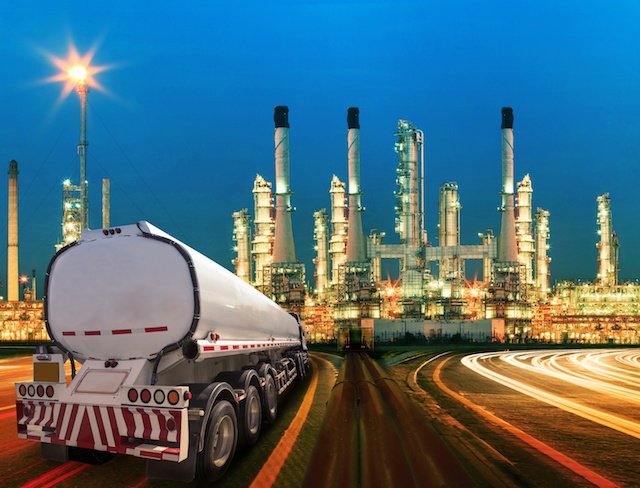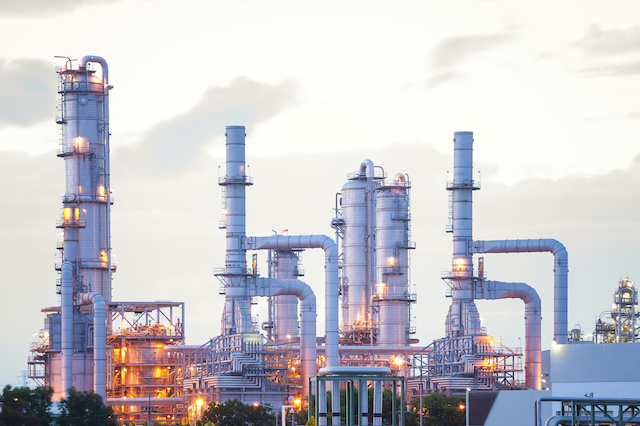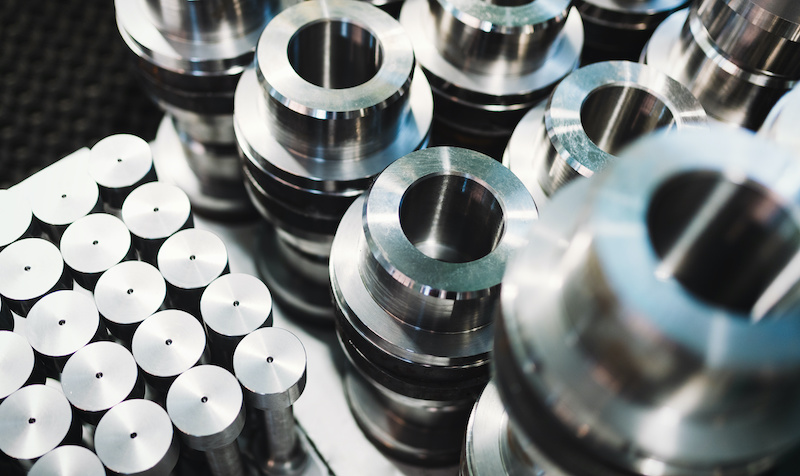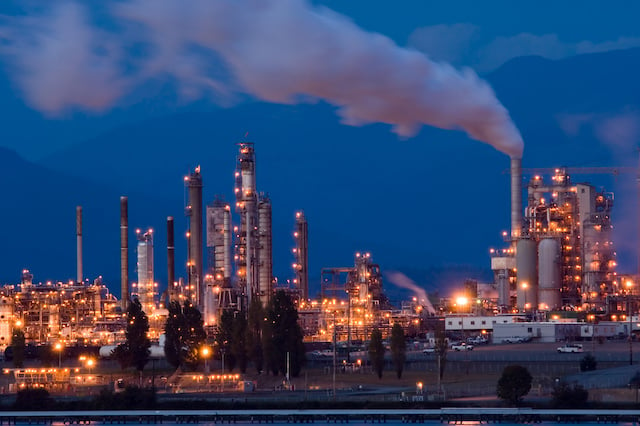
Part of the INCOLOY family, Alloy 925 is a nickel-iron-chromium alloy. It’s age-hardenable, and like all high-performance nickel alloys (superalloys), 925 is tough and versatile, and continues to perform well in hot, cold, and corrosive conditions. Nickel alloys are a safe, durable and cost-effective choice for use in harsh environments. They’re well-suited to high-pressure, high-stakes sectors such as the aerospace, chemical and petrochemical industries.
With copper, molybdenum, aluminium and titanium, Alloy 925 has been specifically developed to combine strength and corrosion resistance. This superalloy’s chemical composition makes it highly stable, retaining its mechanical properties at temperatures up to 650ºC. It shows this same stability at cryogenic temperatures, which are defined as ranging from -150ºC to absolute zero.
Alloy 925 is age-hardened (the process is also called precipitation hardening) before supply. Heat treatment provokes a strengthening reaction from the titanium and aluminium elements, resulting in improved fatigue properties and even more impressive performance in extreme conditions. This makes it a popular choice for application in the oil and gas industry.
Corrosion resistance
The individual elements of INCOLOY Alloy 925 contribute different properties that enhance its resistance to corrosion. Nickel protects the alloy from chloride-ion stress-corrosion cracking. This is an intergranular corrosion that happens when the metal is subjected to tensile stress in a high-temperature environment where oxygen and chloride ions are present.
Nickel also combines with the copper and molybdenum additions to make the alloy highly resistant to reducing agents such as hydrochloric, sulphuric and phosphoric acid. Individually, the molybdenum element also helps to guard against crevice corrosion and pitting – localised forms of damage that can penetrate deep into the metal.
The combination of all these elements means that Alloy 925 is extremely resistant to general, intergranular and localised corrosion, and stress-corrosion cracking, in both oxidising and reducing environments. It also resists sulphide stress cracking, which is induced by tensile stress, high temperatures and the presence of diffusible hydrogen: a significant risk in oil and gas production.
This makes Alloy 925 a natural choice for use in “sour” environments that contain hydrogen sulphide. It’s also suitable for environments containing phosphoric acid, sulphuric acid, and seawater.
Mechanical properties
INCOLOY Alloy 925 has outstanding tensile, creep-rupture and yield properties. These properties remain stable at high temperatures as well as in corrosive environments, making it suitable for use even in challenging conditions.
Alloy 925’s tensile and yield properties mean that it can support high mechanical loads before stretching, deforming and, ultimately, fracturing – even in extreme heat.
Its exceptional resistance to creep means that components made with Alloy 925 will resist deformation for longer when subjected to repeated stress at long intervals in hot environments (low cycle fatigue). This extends both the lifespan of the component and that of the system as a whole, making operation safer and easier. It also increases cost-effectiveness, reduces maintenance and decreases downtime, since components need to be replaced less often.
Working with INCOLOY Alloy 925
Alloy 925 is also resistant to post-weld cracking, making it an optimal choice for welding using conventional techniques. Gas-tungsten arc welding and gas-metal arc welding are recommended. INCONEL alloy 725 welding products are ideal for use with these methods. Avoid using submerged arc and shielded metal arc welding when working with Alloy 925.
With good ductility, Alloy 925 can be easily formed using any standard technique, although its strength compared to other metals means that more power is required. If hot-working this alloy, a temperature range of 870 to 980ºC will ensure optimal corrosion resistance and strength.
Applications
The ideal field of application for Alloy 925 is one that requires both high strength and outstanding corrosion resistance, hence its frequent use in the oil and gas industry. Its excellent operability in “sour” environments means that it is often used in down-hole and surface gas-well components: valves, hangers, tool joints, landing nipples, packers and tubular products.
Alloy 925 is also a popular choice for use in marine environments, specifically for fasteners and pump shafts. Its resistance to reducing and oxidising agents makes it suitable for high-strength piping systems.
Similar alloys
Special Metals Corporation launched INCOLOY Alloy 925 in 1982. The alloy was created as an improvement on Alloy 825, which had been developed to combine heat and corrosion resistance while remaining affordable and versatile. However, while 825 retains its mechanical properties at cryogenic temperatures – and can be strengthened further with cold working – these tend to change at temperatures over 540ºC, limiting its field of application. The addition of titanium and aluminium addressed this limitation by significantly increasing the strength of Alloy 925 compared to its predecessor, especially in reaction to heat treatment.
Among the high-performance nickel alloys, INCONEL Alloy 718 and INCONEL Alloy 725 offer a similar combination of exceptional strength in hot and/or corrosive environments, good ductility and resistance to stress-corrosion cracking. These alloys are also frequently used in oil and gas production and in marine environments.
Conclusion
In general, nickel alloys are suitable for operation with high mechanical loads in hot, cold, and corrosive environments. Their mechanical properties mean that they are resistant to fatigue and do not stretch, deform or break as easily as other metals. This is why nickel-alloy components are standard across a range of challenging sectors where both strength and precision are required.
But each of them also has its own specific properties, often as a result of targeted development. Alloy 925 stands out because – in contrast to its predecessor, Alloy 825 – it combines outstanding corrosion resistance with impressive strength, and retains these qualities at temperatures as high as 650ºC. It is also notable for its resistance to stress corrosion and post-weld cracking. In other words, unlike many materials, the strength of Alloy 925 does not come with an increased risk of embrittlement, damage or deformation.
To find out more about all of the available INCOLOY and INCONEL alloys, visit our Grades section. To discuss your requirements with a member of our Sales team, please contact us.
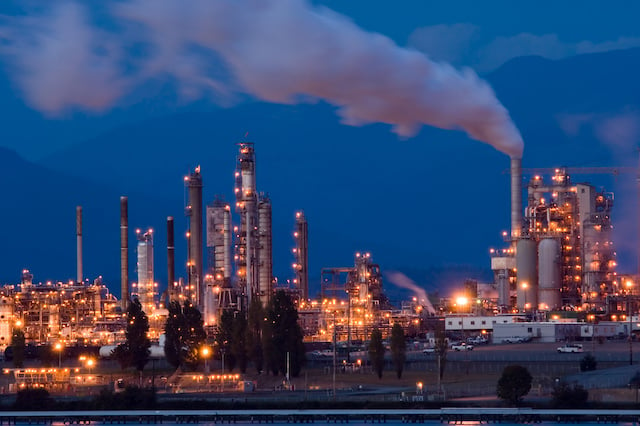 Product Focus: INCOLOY Alloy 925
Product Focus: INCOLOY Alloy 925